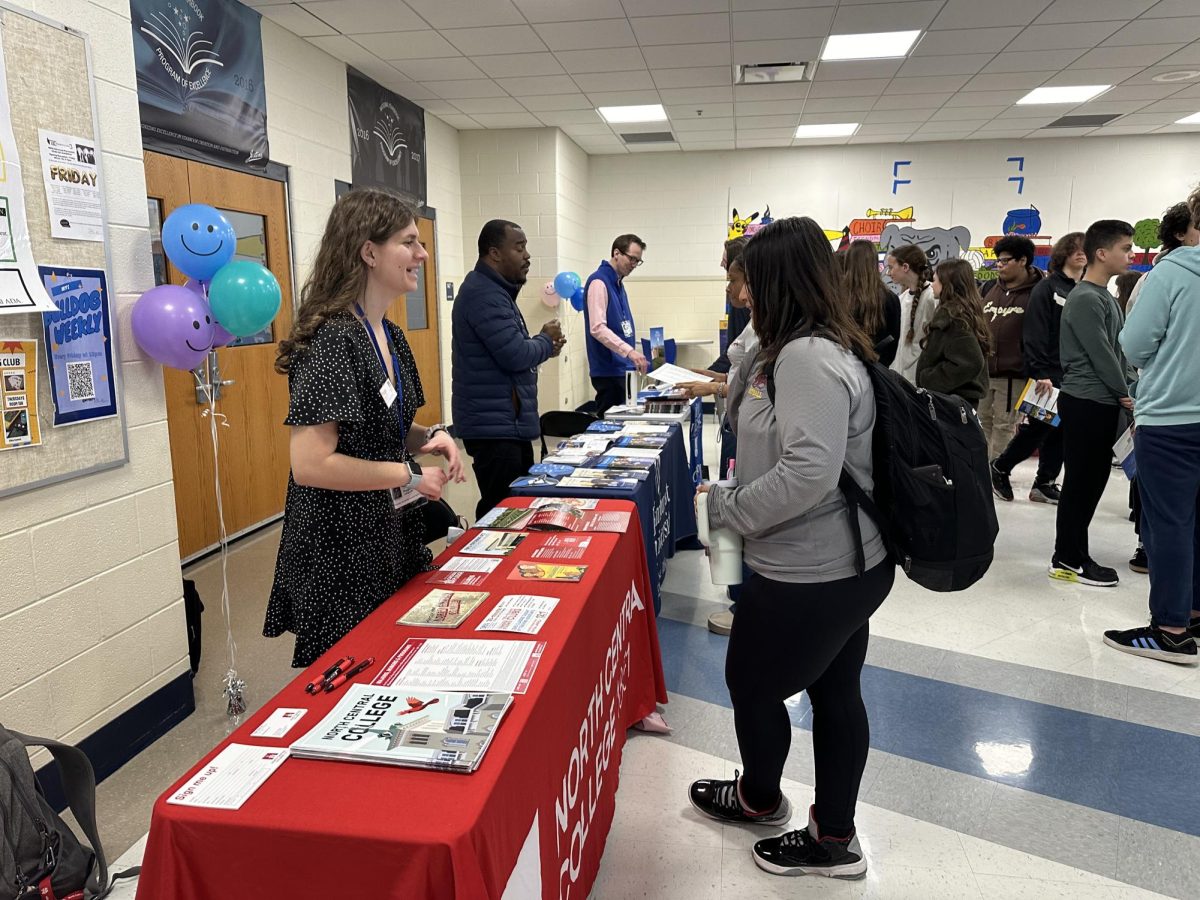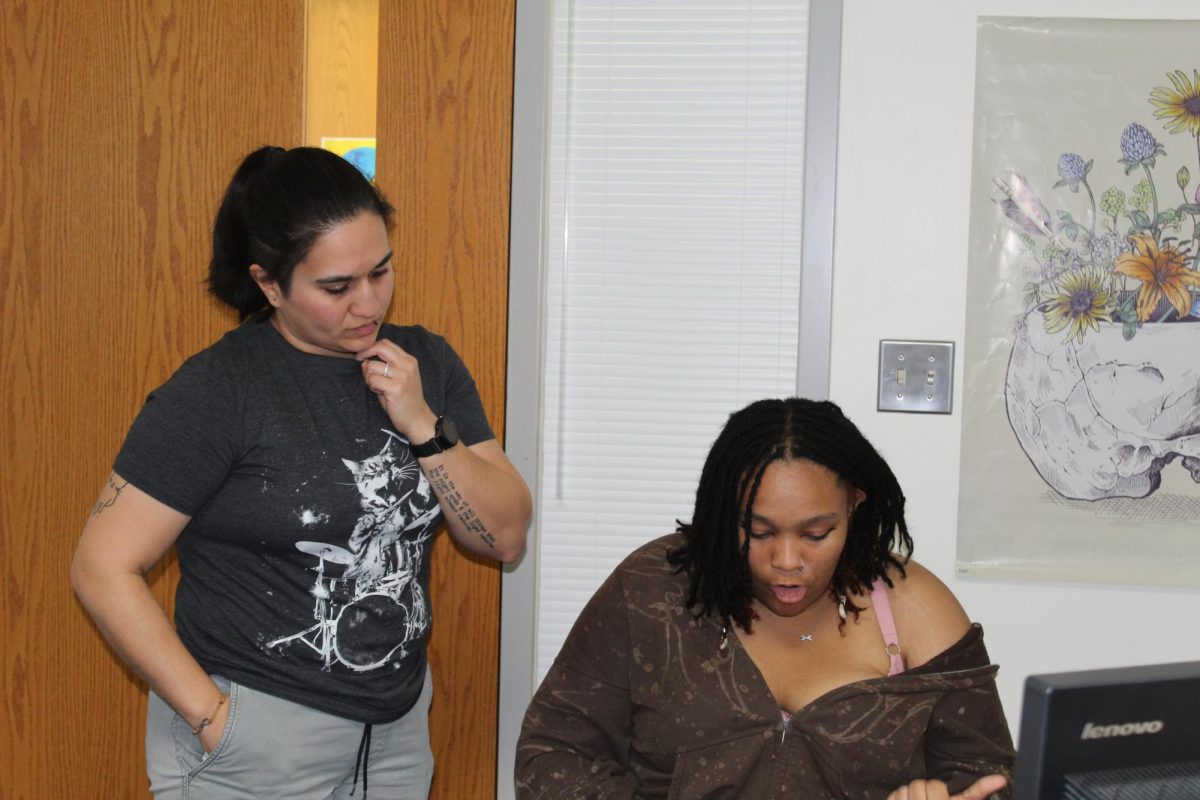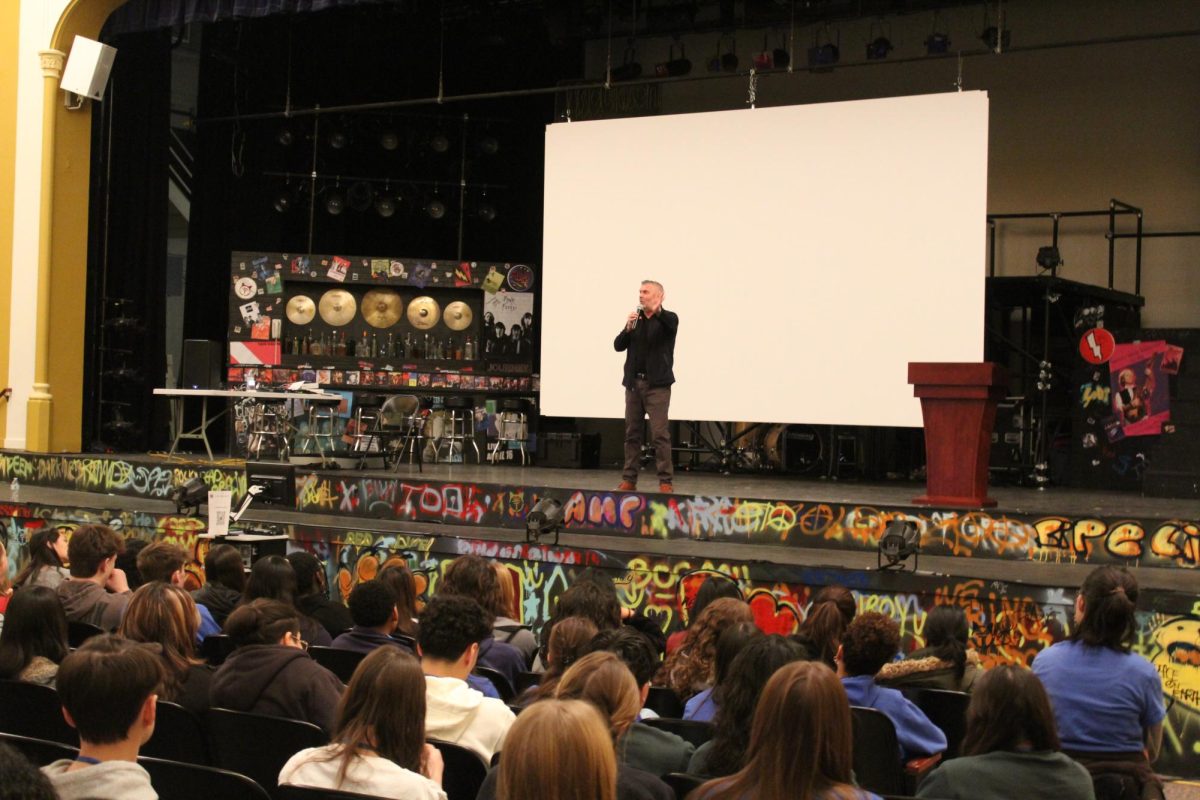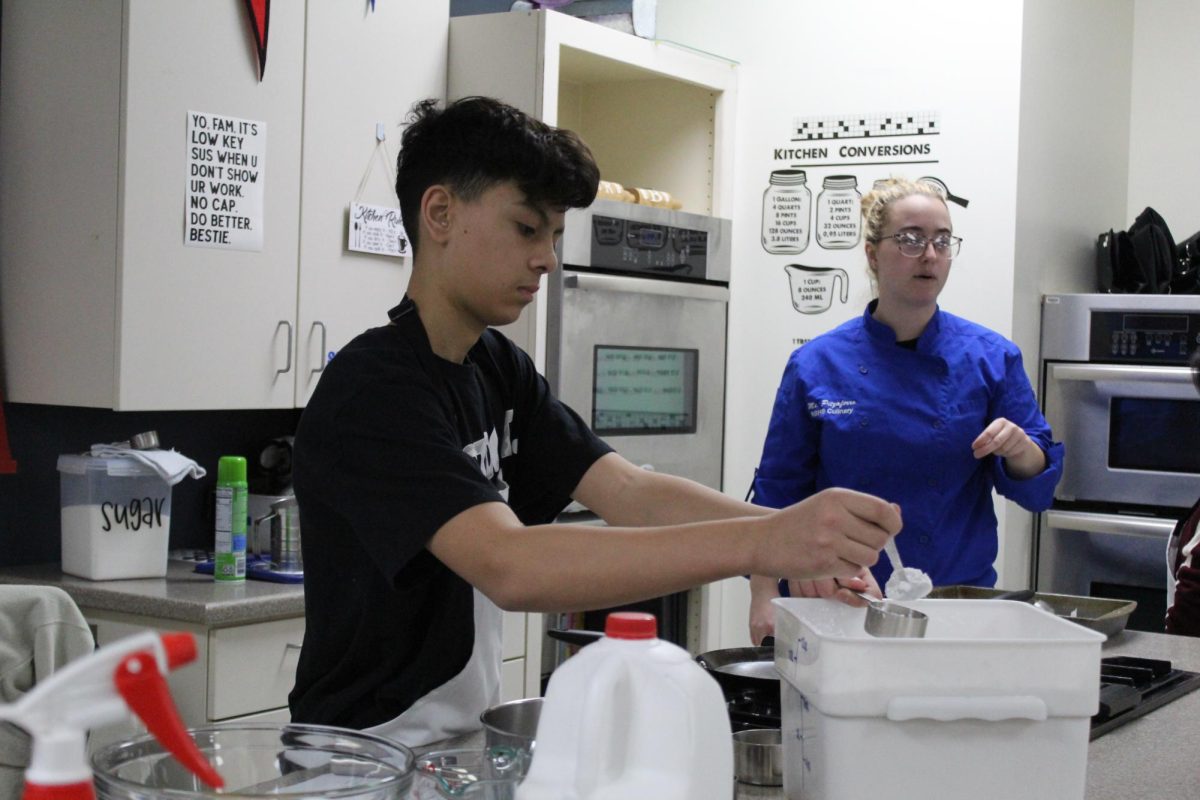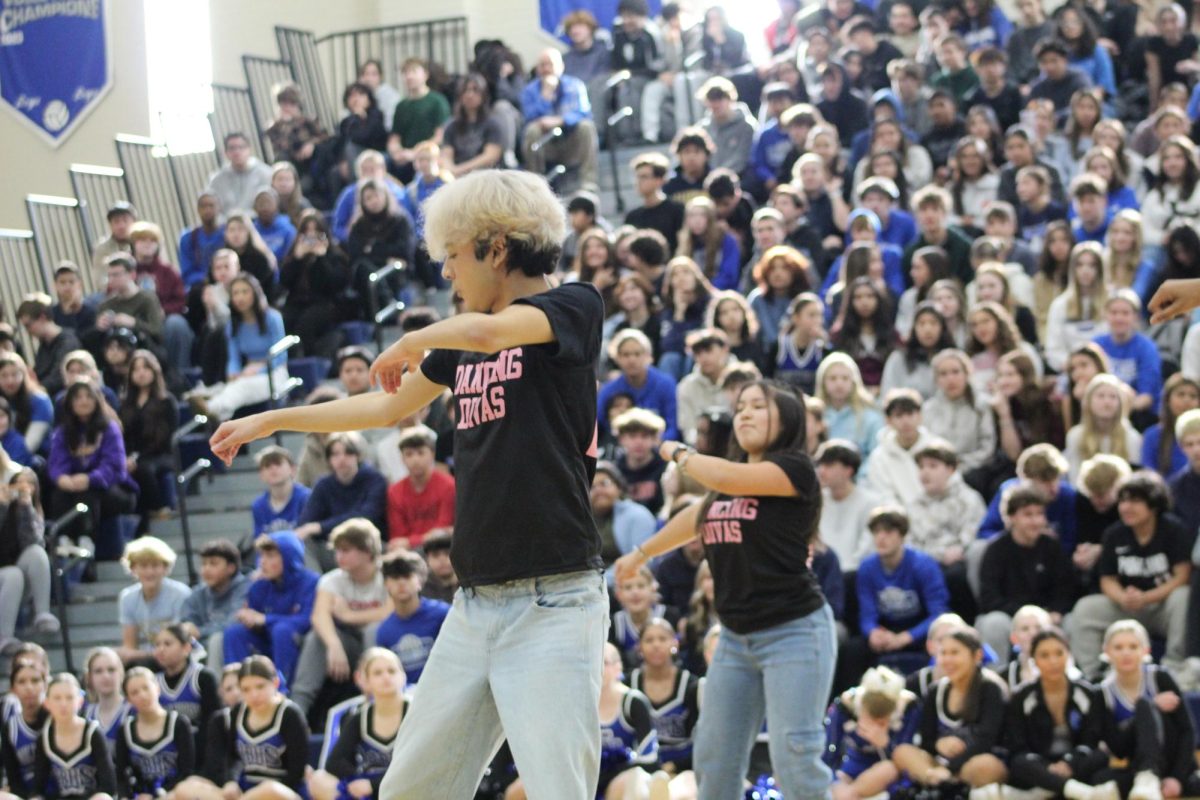On April 16, 2024, juniors at Riverside Brookfield High School took the first digital SAT administered at the school, including the Illinois state-mandated essay portion. The College Board aims to provide students with a less stressful testing model, including a combined Reading and Writing section with shorter passages, a combined full-calculator Math section with a built-in Desmos graphing calculator, and a typed essay.
The RB class of 2025 has a variety of opinions on the switch from paper to digital. Junior Bennet Janunas made sure to prepare himself for the digital model, which he prefers over its paper successor.
“We’re the first class that’s done the actual SAT digitally,” Janunas said. “We had only done one PSAT that was digital—which was the one that was earlier this year. All the other ones had been paper so it was pretty much a new experience for everyone. Me personally, I didn’t feel thrown off that much because I had done some preparation beforehand—I had taken some practice tests—so it was pretty similar to the format of those ones. Overall, I think it was a better experience than it would have been on paper.”
Junior Isabella Cunat agrees, finding appreciation in the variety of changes made to alleviate test takers’ stress.
“[Given] either format, I don’t think I would’ve liked it,” Cunat said. “Honestly, compared to taking the PSAT on paper, digitally was way better. It felt faster and quicker. I know many say ‘Oh, it’s so rough on your eyes.’ I’m a teenager and I’m always on my phone, so I feel like that didn’t really affect me as much as people would say. I also liked a lot of the options they offered. I really liked using the Desmos online calculator. I really liked the online timer on my own screen and [being able to] turn it off when I wanted to.”
Furthermore, Janunas enjoyed the streamlining of the test, making it easier to work at your own pace and eliminating unnecessary waiting.
“I think it was good that everyone had their own scheduled breaks and stuff like that, so you were on your own time and not on other people’s time,” Janunas said. “It helped a lot with moving people along, and you didn’t have to wait for all the ‘We’re going to read instructions for this part’ stuff. Once you get started, you keep going until you’re finished.”
However, not everyone felt positively about the switch. Junior Jack Adams strongly prefers the paper counterpart, finding the new version to be the opposite of what it intends to achieve.
“Everyone says that the questions give you more time, but I honestly don’t think they did,” Adams said. “I felt like I was so much more rushed, and then when it said five minutes [left], the timer flashed red, and that freaked a lot of people out.”
Each of the two sections of the digital SAT is split into two modules. The first contains a variety of easy, medium, and hard questions so the program can gauge the student’s level. Using the student’s performance in the first module, the second module contains questions that are either easier or harder, effectively “capping off” the student’s potential score.
“Paper is more comfortable,” Adams said. “I feel like I have more time on paper. I feel better about it not being curved with the questions getting harder.”
Although students may prefer the digital version, it doesn’t come without its faults. Janunas’ initial experience with the digital model was an uphill climb.
“I think there’s a learning curve that comes along with it,” Janunas said. “Before this year, I had been preparing for it to be on paper, so when I took my first PSAT digitally, I saw my score go down a lot. As I’ve gotten used to it, though, I think it’s a better experience overall.”
Cunat, too, found fault in certain aspects of the experience, ranging from a small inconvenience to an entire portion of the test.
“I really hated how, when you had five minutes left, a timer popped up no matter what,” Cunat said. “I was already stressed enough, I didn’t need another timer [to worry about]. [Also,] I definitely did not want to do an essay. Illinois is one of the only states that does it, and I honestly don’t really see a need for it, so I would get rid of that.”
Cunat credits her liking of the digital model to RB’s College Admissions Preparation (CAP) class and online resources. Education companies such as Khan Academy offer test prep lessons and practice questions.
“I have been prepping for a few months now,” Cunat said. “I was in CAP with Mrs. Watson, so that definitely helped a lot, and I’ve been doing my own at-home Khan Academy reviews and lessons. I used what I had gotten on my PSAT [to decide what to study]. My reading levels were pretty good, so I focused more on math, especially geometry and trigonometry. I used my PSAT skills and my score to help better my SAT score. Honestly, it [taking the SAT] is like taking another Khan Academy quiz.”
The College Board offers mock exams through Bluebook, its testing software, which Janunas used to familiarize himself with the digital model. Additionally, his love of literature helped keep his reading skills sharp.
“In terms of format, I knew what to expect because I took practice tests and stuff like that,” Janunas said. “They provide a lot of resources, actually, if you just take the time to look into them. The Bluebook practice tests were really helpful. They helped me get a good benchmark, and what I saw on that was very similar to what I saw on the actual test. I read in my free time, and I think that helps in general.”
Technological advancement is inevitable as our world becomes increasingly digital. However, one thing stays the same regardless of preference: the digital world will have an impact one way or another, and it is only a matter of time if it has not already.
“It is kind of hard to be the pilot program with it and having to be the first, but in the end, someone has to,” Janunas said.



